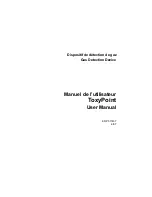
12
WHAT IS GROUND SETTING AND
HOW IT IS DONE?
In our country land formation and soil composition vary in relation to regions. In some
regions the composition may vary frequently (Sand, lime, red earth with dense mineral
content, rocky formation, etc.).
These variations in soil composition mislead the detector and cause perception as metal
or cavity. Therefore first we have to launch the soil characteristics of the region to the
detector’s system. Launching these data will block all misleading effects that may come
up from the ground; these will be perceived as misleading signals from the ground, and
thus eliminated.
Ground setting is one of the most important provisions of exploration. Therefore the
operator should be a keen observer and should be able to detect variations in the
ground. He has to observe soil compositions continuously to be able to make ground
adjustment again in case misleading signals the device will perceive results from
variations in soil composition.
Ground setting is made for the device to recognize the soil and not to be affected by it.
Thus the device is not affected from metal or cavity reflections of varying soil
compositions. If ground setting is not properly done it will cause loss of depth and
minerals to be evaluated as metals or cavities. Therefore
ground settings should be
made as correctly as possible.
Considering the general condition of land formation in our country, a ground setting
system is established that will eliminate ground effect on the device.
Summary of Contents for JeoScan 2D system
Page 1: ......
Page 3: ...2 WARNING PLEASE DO NOT START ASSEMBLING OR USING BEFORE READING THE WARNINGS SECTION...
Page 24: ......










































